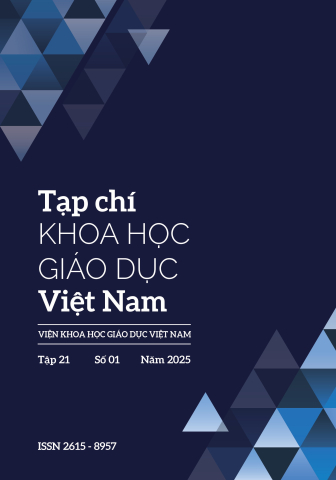[1] Barrot, J. S, (2023), Using automated written corrective feedback in the writing classrooms: effects on L2 writing accuracy, Computer Assisted Language Learning, 36(4), 584-607, https://doi.org/10.1080/0958 8221.2021.1936071.
[2] Guo, Q., Feng, R., & Hua, Y, (2022), How effectively can EFL students use automated written corrective feedback (AWCF) in research writing?, Computer Assisted Language Learning, 35(9), 2312-2331, https:// doi.org/10.1080/09588221.2021.1879161.
[3] Hoang, T. L. G, (2022), Feedback precision and learners’ response: A study into ETS Criterion automated corrective feedback in EFL writing classrooms, The JALT CALL Journal, 18(3), 444-467.
[4] Lavolette E, Polio C & Kahng J, (2015), The accuracy of computer-assisted feedback and students’ responses to it, Language Learning & Technology, 19(2), 50-68, http://dx.doi.org/10125/44417
[5] Hunt, K. W, (1965), Grammatical structures written at three grade levels, NCTE Research Report No.3, Champaign, IL: National Council of Teachers of English, Retrieved from http://files.eric.ed.gov/fulltext/ ED113735.pdf
[6] Grégoire, P. (2021), L’utilisation d’un outil numérique d’aide à la révision et à la correction à la fin du secondaire : effets sur la qualité de l’écriture, Canadian Journal of Education / Revue canadienne de l’éducation, 44(3), 788-814, https://doi.org/10.53967/cje-rce. v44i3.4809.
[7] Đỗ Thị Bích Thuỷ, (2024), Sử dụng Google Docs và Merci App trong dạy viết tiếng Pháp, Tạp chí Khoa học Giáo dục, số 2, tr. 25-34.
[8] Butterfield, E., Hacker, D., & Albertson, L, (1996), Environmental, cognitive and metacognitive influences on text revision: Assessing the evidence, Educational Psychology Review, 8(3), 239-260.
[9] Do, T. B. T, (2023), Effects of scaffolded peer review training on revision quantity and quality in foreign language writing, Iranian Journal of Language Teaching Research, 11(2), 55-73, doi: 10.30466/ijltr.2023.121330.
[10] Dikli, S., & Bleyle, S. (2014), Automated essay scoring feedback for second language writers: How does it compare to instructor feedback, Assessing Writing, 22, 1-17, https://doi.org/10.1016/j.asw.2014.03.006.
[11] Koltovskaia S. (2020), Student engagement with automated written corrective feedback (AWCF) provided by Grammarly: A multiple case study, Assessing Writing, 44, https://doi.org/10.1016/j.asw.2020.100450
[12] Ranalli, J., Link, S., & Chukharev-Hudilainen, E, (2017), Automated writing evaluation for formative assessment of second language writing: Investigating the accuracy and usefulness of feedback as part of argument-based validation, Educational Psychology, 37(1), 8-25, https://doi.org/10.1080/01443410.2015.11 36407.
[13] Koltovskaia, S, (2023), Postsecondary L2 writing teachers’ use and perceptions of Grammarly as a complement to their feedback, ReCALL, 35(3), 290- 304, doi:10.1017/S0958344022000179.


